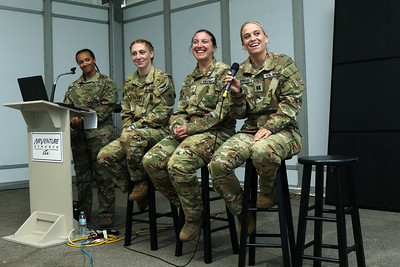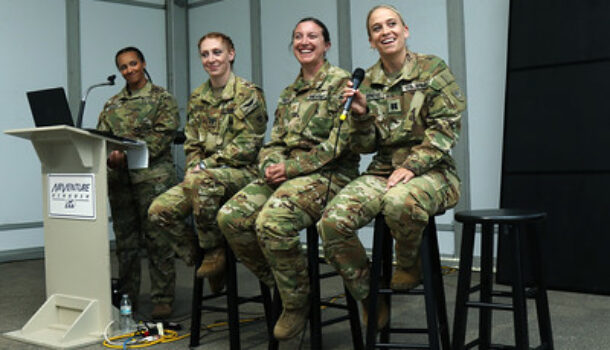ABOVE PHOTO: Capt. Anna Leadens, a Wisconsin Army National Guard area support medevac platoon leader and UH-60 Black Hawk maintenance test pilot, discusses her career in military aviation as Maj. Sarah Latza, Capt. Meredith Porter and 2nd Lt. Charnelle Pinson look on during a panel discussion July 26 as part of the Experimental Aircraft Association’s WomenVenture, an effort to honor and promote women’s role in flight during the EAA’s annual AirVenture in Oshkosh, Wis. Wisconsin National Guard photo by Staff Sgt. Alice Ripberger
Four Wisconsin Army National Guard female soldiers involved in the aviation field spoke about their experiences during a Women in Aviation panel July 26 at the Experimental Aircraft Association (EAA) AirVenture.
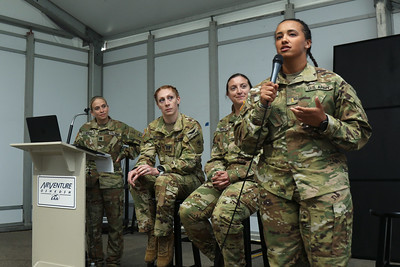
“I never thought it was possible,” Pinson said. “If I had known, I could have done it sooner — I could be way further than I am.
The EAA was celebrating 30 years of women in combat aviation, marked by 1st Lt. Jeannie Leavitt — still serving today as a major general — becoming the first female combat pilot in the U.S. Air Force. But Capt. Meredith Porter — commander of Company A, 1st Battalion, 147th Aviation Regiment in Madison, Wisconsin — said that claim is a bit of a misnomer. Maj. Marie Rossi-Cayton was a CH-47 Chinook pilot and ferried supplies in support of the ground war during Operation Desert Storm in 1991. Rossi-Cayton died March 1, 1991 when her helicopter crashed into an unlit microwave tower in northern Saudi Arabia.
“She was not formally designated a combat pilot, but her life was at risk in the same way that a combat pilot would be,” Porter said.
Porter was joined on the panel by Maj. Sarah Latza, commander of Company C, 1st Battalion, 168th Aviation in West Bend, Wisconsin as well as the operations officer for the West Bend-based Army Aviation Support Facility #1; Capt. Anna Leadens, an area support medevac platoon leader in West Bend; and 2nd Lt. Charnelle Pinson, a forward support medevac section leader in West Bend.
All four spoke of entering the Army aviation field almost by accident, and in some cases being surprised that aviation was a career option for Army women.
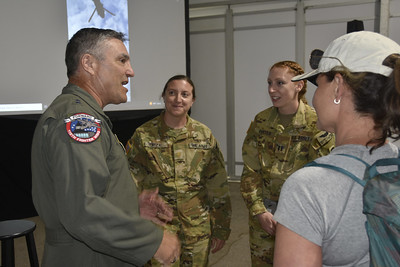
Porter began her military career by enlisting as a chemical specialist in the Wisconsin Army National Guard.
“I didn’t know anything about Army aviation, besides this one time I was at basic training,” Porter said. “I looked up and saw helicopters and thought, ‘Oh, that must be the Air Force.’”
She enrolled in the Reserve Officer Training Corps program at the University of Wisconsin-Whitewater after completing basic training. After seeing a medevac helicopter land on campus, Porter concluded, “that is the coolest thing you can do in the U.S. Army. Whatever those guys did to get there, that’s what I’m going to do.”
Latza’s parents were both U.S. Marines, and because of the training demands her parents faced, she determined she would never join the military — until the Sept. 11 terror attacks. As she looked at ways she could serve, one recruiter offered her a signing bonus to play French horn in an Army band. Another suggested she check out the UH-60 Black Hawk helicopters in Madison.
“I had no real ability to fly because I was blind as a bat and my glasses were super thick,” Latza said. But she enlisted in helicopter maintenance and deployed to Kosovo with the 1st Battalion, 147th Aviation Regiment in 2006. She returned from that deployment with the desire to be a pilot, and underwent surgery to improve her vision. She also enrolled in ROTC and earned an accounting degree.
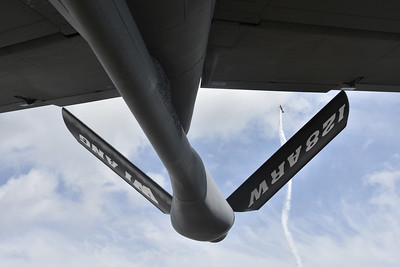
“Actually, as much as I love flying, I also love accounting,” Latza admitted.
Like Porter, Leadens also decided she wanted to be in Army aviation through her experiences in ROTC. She was at Fort Bragg, North Carolina for troop leader training, and saw helicopters taking part in the training.
“I thought, ‘All right, that is really cool,’” Leadens said. Up to that point, she had not considered aviation, but she had considered the medical field. She decided she wanted to be in a medevac unit while drilling with the Wisconsin Army National Guard units in West Bend as a cadet, shadowing the unit leaders there.
“Technically, I am a medical services officer, not an aviation officer,” Leadens said. However, she is a UH-60 Black Hawk maintenance pilot, and has a private pilot’s license.
Pinson said that, while listening to the other officers, she realized that they were “walking the same path in different ways.” She was a cheerleader at the University of Wisconsin-Milwaukee who accompanied a friend on her visit to a National Guard recruiter. Pinson decided that she was interested in joining the Guard, and enlisted as an ammunition specialist. She deployed in 2018 with the 1s Battalion, 121st Field Artillery in support of Operation Inherent Resolve, Spartan Shield and Freedom Sentinel.
“It was a blast,” she said of the deployment. “I learned so much and I got to do a lot of different things.”
During the deployment, Lt. Col. Daniel Hendershot — at that time the battalion executive officer — asked Pinson if she had ever considered becoming an officer. He persisted in encouraging her to consider becoming an officer. Hendershot’s wife, the late Lt. Col. Lisa Hendershot — herself a helicopter pilot with the battalion — also answered questions and offered Pinson some perspective.
“I had to check myself,” Pinson said. “Somebody is really taking the time out of their very busy schedule to tell you why you would be a good officer, so you should probably listen.”
Speaking with an Officer Candidate School recruiter, Pinson learned that aviation was among the officer branches available in the Wisconsin Army National Guard.
“I never thought it was possible,” Pinson said. “If I had known, I could have done it sooner — I could be way further than I am.
“I’m very happy for where I am and the experiences I’ve had,” she continued, “because it gives me this opportunity to reach out and mentor people and tell them that this is something they can do — they don’t have to take the long route like me.”
A big reason for taking part in the panel at the EAA was to encourage young women to consider military aviation. Officers and warrant officers can become pilots for the UH-60 Black Hawk helicopters — some designed for troop and equipment transport and others designed for medevac — the UH-72 Lakota helicopter, and the C-26 Metroliner airplane. The Wisconsin Army National Guard’s 32nd Infantry Brigade Combat Team also has the RQ-7B “Shadow” unmanned aerial vehicle, which is piloted remotely.
Latza emphasized the tremendous opportunities offered in Army aviation, and military service in general.
“In the United States Army, a 23-year-old or 24-year-old can be put in charge of more than 15 Soldiers, depending upon what kind of organization that you’re in, and millions of dollars worth of equipment,” Latza said. “I don’t know very many civilian organizations that do that. It’s an incredible thing that the military does. It indicates a lot of trust in us as individuals.”
Porter spoke of her experience combating wildfires in Wisconsin and California, calling it the “funnest, most rewarding flying I have ever done.” Leadens spoke about search and rescue missions and the role Wisconsin’s interagency Air Coordination Group plays in coordinating assets from the Wisconsin National Guard, Civil Air Patrol, Department of Natural Resources and State Patrol for those missions.
“Within 15 minutes, somebody from each of those organizations is on a call and we’re all communicating with each other, looking at the assets we have available and working as an integrated team to launch and do our best for the state to find those individuals,” Leadens explained.
Pinson said she hoped to raise awareness of a career in aviation among females.
“They can get involved and not have to just stumble upon it — they can do it purposefully,” she said.
“Barrier to entry is a perception,” Porter said. She urged those in the audience to share the stories from the panel with “the younger woman or young person in your life that thinks this could be a pathway for them.”
